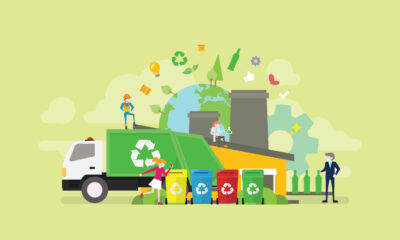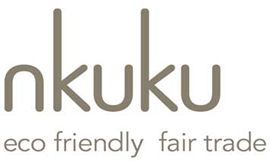

Environment
3 Sustainable Practices for Your Next Industrial Project
From all corners of the globe, business leaders are becoming more conscious and aware of the environmental impact that their industries are causing. This has resulted in a growing interest in environmental stewardship and innovative approaches to make business operations greener and more sustainable. Although such initiatives benefit them in terms of social responsibility, it also helps them potentially save costs, grow more customers who are advocates of environmental protection, and comply with their respective industries’ regulatory guidelines.
There’s no better time to start implementing sustainable practices in your business operations than now. With critical environmental issues rising every year, entrepreneurs and business leaders should join the discussion in developing sustainable practices. For instance, industries should do their part (even in small ways) to reduce their carbon footprint.
With that in mind, this article will present different effective sustainable practices for your company or business. Here are some excellent green tips that are good for your next industrial project:
1. Use of Modular Offices or Buildings
One sustainable practice you should pay attention to is the use of temporary offices or buildings. Temporary buildings come in many types and can be utilized for many different purposes. Some people might refer to them as mobile offices, trailers, compact structures, and so on. Despite the various terms, they all serve the following goals: to provide businesses with several benefits, including sustainability, cost-effectiveness, and flexibility.
The modular buildings are usually built offsite in factories. Each module begins as a transportable component of a much larger, more complex construction project. So, if you’re engaged in a similar project, you’ll notice how this method saves you more time, energy, and costs.
Industries can take advantage of the following benefits with these temporary or long-term eco-friendly office buildings:
- On-Demand Deployment
Some companies specializing in producing lightweight modular office buildings offer a great variety of choices for their clients. These pre-assembled products could be located near you, ready to ship within a few weeks or even sooner. And you can just collaborate with them regarding deployment and delivery. These modular offices are capable of meeting your office needs and complete your project deadlines too.
- Great For Office Expansions
As long as the space on your facilities permits it, you can add any number of temporary buildings. This is particularly good for ongoing projects, but you don’t need to implement and build everything at once. Some companies need to stabilize their operations first and gradually expand. With these modular buildings, you don’t have to feel pressured to shell out investment all at once.
- Versatile And Customizable
The layout of the floor, the design of the walls, and the materials are all customizable, which is why many business owners love it. Various options are available for the shape, type, and roof design of your modular building. Each unit can be customized according to your preferences and business needs.
2. Use Of Prefabricated Materials
Whether you’re in the process of building an office or factory, choosing prefabricated materials is one way to be more eco-friendly. The production of construction materials such as doors, roofs, windows, and other office areas uses lesser resources, especially when done in bulk, thus making the entire process better for the environment. For instance, timber manufacturers end up implementing the best sustainable construction practices available. Moreover, various prefabricated components can be transported and assembled on site. Your business can save costs when using these alternatives.
A traditional on-site construction method usually results in waste due to the need for extra materials. There is no reliable way to treat chemical effluents and airborne dust in an open environment, polluting the air and the land. With a controlled environment where prefabricated materials are created, careful considerations target a better production system that doesn’t harm the environment.
3. Use Of Sustainable Transportation Systems
Most businesses produce more greenhouse gas emissions as a result of their modes of transportation. Although it’s understandable, as their operations require delivery and logistics, there are greener alternatives. In this area, there are several practical and creative ways for you to increase savings while saving the environment:
- Invest in newer fuel-efficient vehicle models for deliveries.
- To maximize energy efficiency and vehicle longevity, vehicle maintenance is a must.
- Encourage staff and workers to commute, bike to work, or take long walks for environmental and health reasons.
- Promote ordering in bulk to reduce shipping costs and energy consumption.
These ideas can all be added together to yield savings. Aside from the financial benefits that your company enjoys, other people, especially your clients, become aware of your sustainability efforts. This helps you create a better brand image and sets your brand in a good position as a responsible company. Using these advantages, you can earn more customers and build better relationships with them.
Conclusion
Industries worldwide are viewed as contributors to the detriment of the environment. Fortunately, with awareness and continuous efforts, many companies have strategized to become greener and more sustainable with their systems and processes. With the different sustainable practices mentioned above, you and your business can help save the environment in diverse ways.


 Environment9 months ago
Environment9 months agoAre Polymer Banknotes: an Eco-Friendly Trend or a Groundswell?

 Environment11 months ago
Environment11 months agoEco-Friendly Home Improvements: Top 7 Upgrades for 2025

 Energy12 months ago
Energy12 months agoA Closer Look at The Rapid Growth of Solar Energy in Ireland

 Features8 months ago
Features8 months agoEco-Friendly Cryptocurrencies: Sustainable Investment Choices




























